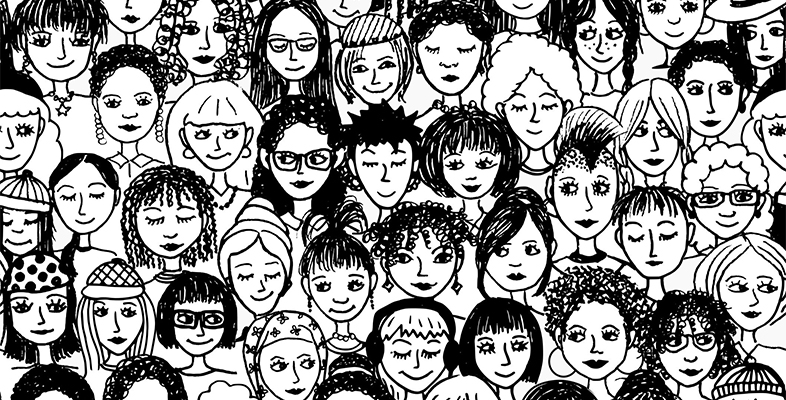2.2 Understanding the social model of health
The social model of health is so broad that it can be difficult to get a sense of it as a whole, but at the heart of it is a woman’s social context. As you have already touched on, a woman’s social context can bring a wide range of factors to bear on her health and wellbeing.
Yuill and colleagues (2010) have highlighted six features of the social model of health which help to provide an overview of what this model or approach encapsulates.
These six features or factors are:
- An individual’s health is enabled or inhibited by their social context.
People commonly believe that lifestyle factors such as diet and exercise are simply about personal choices, whereas the social model explains that people’s behaviours are shaped by their social context.
- The body is simultaneously social, psychological and biological.
The biological aspects of bodies cannot be separated from social, psychological, cultural and individual processes. Identity is a good example of showing how social and cultural expectations blend with people’s psychology to shape how people present their bodies to others.
- Health is cultural
All cultures have developed their own norms for understanding illness and expressing its impact. Some South Asians can express mental distress by referring to physical pain in their bodies, whereas inhabitants of a community in North East Scotland were habitually stoical when facing illness and tended not to complain or draw attention to their problems.
- Biomedicine and medical science is something – but not everything.
Social scientists can tend to present an inaccurate ‘caricature’ of biomedicine. Although many criticisms are valid, one should not disregard the many strengths of biomedicine.
- Health is political.
Different political ideologies can lead to very different healthcare systems. For example, the free-market ideology of the United States has led to predominantly privatised healthcare provision.
- Other voices matter.
In terms of making sense of and experiencing health as well as ill-health, the social model acknowledges that other voices matter. Knowledge and perspectives must go beyond the biomedical approach.
In the next activity you will match these six features with illustrative examples.
Activity 3 The social model of health
Part 1
Drag and drop the correct illustrative example for each of the six factors about the social model of health as summarised by Yuill et al. (2010).
Using the following two lists, match each numbered item with the correct letter.
-
An individual’s health is enabled or inherited by their social context.
-
The body is simultaneously social, psychological and biological.
-
Health is cultural.
-
Biomedicine and medical science is something, but not everything.
-
Health is political.
-
Other voices matter.
a.Many people in the United Kingdom feel passionately about the importance of the state-run, public sector delivered format of the National Health Service/NHS (i.e. the NHS is political).
b.Social class and a woman’s context shapes her life, it affects access to material resources and the amount of control women have over their lives.
c.Many people with a long-term or chronic illness feel that maintaining and creating an understanding of their situation provides a sense of self and identity that is just as important (if not more so) than medical discourses about their condition.
d.Sometimes social scientists can present biomedicine in such a way that no medical practitioner/doctor would ever recognise the medical model that they are said to be delivering.
e.Football sub-culture means that players frequently mask pain in order to keep their place in the squad.
f.It is both through and with a woman’s body that her self-identity is enacted and performed, for instance in the styling of her hair and selection of clothes.
- 1 = b
- 2 = f
- 3 = e
- 4 = d
- 5 = a
- 6 = c
As you work through this free course, you will be encouraged to continue to think about the range of voices that can be brought to bear on our understandings of health and wellbeing.
